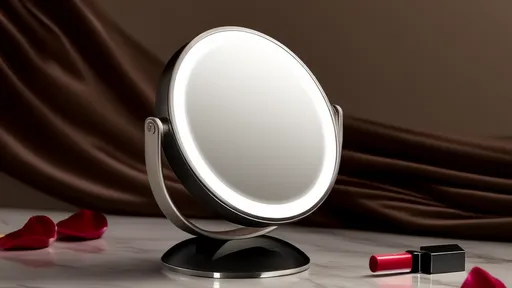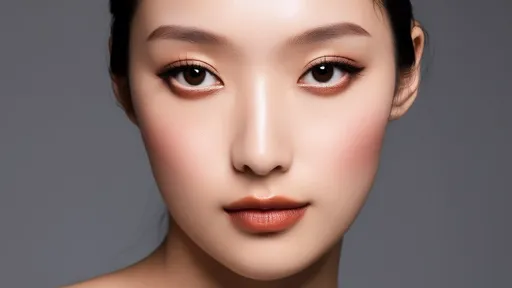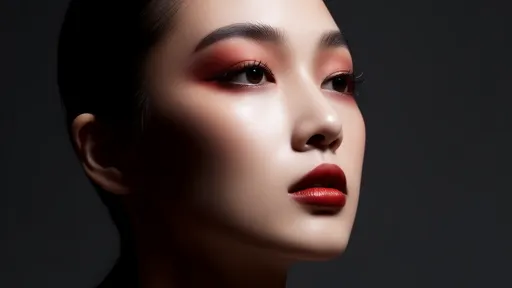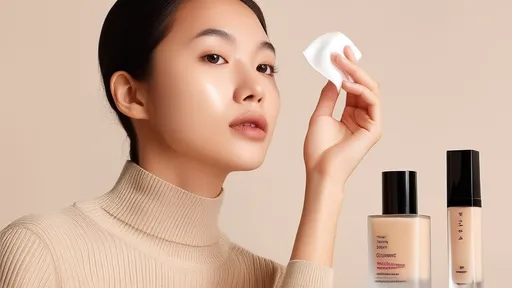The beauty world is constantly evolving, and the latest trend taking over social media and makeup tutorials is the "Early C, Late A" makeup adaptation method. This innovative approach isn’t just about slapping on products—it’s a strategic way to enhance your natural features while addressing the changing needs of your skin throughout the day. Whether you’re a minimalist or a full-glam enthusiast, this method offers a fresh perspective on how to curate your makeup routine for maximum impact.
At its core, the Early C, Late A philosophy revolves around two key elements: vitamin C in the morning and vitamin A (retinol) at night. But it’s not just skincare—it’s about translating these principles into your makeup choices. The idea is to create a radiant, healthy-looking complexion during the day while allowing your skin to repair and rejuvenate overnight. The result? A seamless transition from fresh-faced mornings to sultry evenings without compromising skin health.
Morning Glow: The Power of Vitamin C in Makeup
The "Early C" phase focuses on harnessing the brightening and antioxidant properties of vitamin C—not just in your serums but also in your makeup. Think dewy foundations infused with vitamin C, illuminating primers, and lightweight concealers that counteract dullness. The goal is to mimic the effects of a vitamin C serum through your cosmetics, creating a lit-from-within glow that lasts all day. Cream blushes in peach or coral tones add a natural flush, while gold-toned highlighters enhance the luminosity. This isn’t about heavy coverage; it’s about letting your skin breathe while looking effortlessly radiant.
For those with oily skin, a mattifying primer with vitamin C can balance shine without sacrificing the fresh finish. Meanwhile, dry skin types can lean into hydrating tinted moisturizers that blend skincare and makeup seamlessly. The key is to avoid powders that can settle into fine lines and instead opt for liquid or cream formulations that move with your skin. A spritz of a vitamin C-infused setting spray locks everything in place while giving an extra boost of antioxidants to combat environmental stressors.
Evening Transformation: Retinol-Inspired Drama
As the sun sets, the "Late A" approach takes center stage. Just as retinol works overnight to renew skin cells, your evening makeup should embody transformation. This is where you can play with deeper tones, richer textures, and a more polished finish. Swap your daytime lip balm for a bold plum or burgundy lipstick, and trade subtle shimmer for a smoky eye or metallic liner. The idea is to mirror the regenerative intensity of retinol with makeup that feels more intentional and daring.
Foundation choices shift, too—opt for formulas with a soft-matte or satin finish that provide slightly more coverage while still allowing skin to breathe. A contour shade lightly blended along the cheekbones adds dimension, mimicking the "lifting" effect of retinol over time. If you’re heading out, a cream eyeshadow in a deep bronze or mauve can effortlessly transition your look from office to evening. The Late A phase isn’t about piling on products; it’s about strategic enhancements that elevate your features while letting your nighttime skincare do its magic beneath the surface.
Why This Method Works
The brilliance of the Early C, Late A system lies in its harmony with your skin’s natural rhythm. During the day, your skin faces UV exposure, pollution, and blue light—all of which vitamin C helps neutralize. At night, while you sleep, your skin enters repair mode, making it the perfect time to support cell turnover (hello, retinol). By aligning your makeup with these cycles, you’re not just following a trend—you’re adopting a holistic approach to beauty that prioritizes long-term skin health alongside immediate aesthetics.
This method also encourages mindfulness in product selection. Instead of defaulting to the same full-face routine day and night, you’re forced to consider what your skin truly needs at different times. It’s a subtle shift that can lead to less product waste, fewer breakouts, and a more intuitive relationship with your makeup bag. Plus, the contrast between your daytime freshness and evening allure keeps your look exciting without requiring an entire collection of new products.
Adapting the Trend for Your Skin Type
While the Early C, Late A trend is versatile, customization is key. Those with sensitive skin might opt for a vitamin C powder mixed into their moisturizer instead of a potentially irritating serum, followed by a gentle retinol alternative like bakuchiol at night. Oily skin types can focus on oil-free vitamin C mists and non-comedogenic evening makeup removers to prevent clogged pores. Mature skin might emphasize hydrating primers with vitamin C and creamy, blendable evening makeup that doesn’t accentuate texture.
The takeaway? This isn’t a rigid set of rules but a framework to refine your routine. Whether you’re a busy professional who needs a five-minute morning face or a makeup artist who loves experimenting, the Early C, Late A method meets you where you are. It’s less about the number of products and more about their purpose—each step serving either protection or renewal, just like the vitamins that inspired it.
As with any trend, the real test is how it fits into your life. But one thing’s certain: the Early C, Late A makeup adaptation method is more than a hashtag. It’s a reminder that the best beauty routines don’t fight against your skin’s biology—they work with it.

By /Jun 28, 2025

By /Jun 28, 2025

By /Jun 28, 2025

By /Jun 28, 2025

By /Jun 28, 2025

By /Jun 28, 2025

By /Jun 28, 2025

By /Jun 28, 2025

By /Jun 28, 2025

By /Jun 28, 2025

By /Jun 28, 2025

By /Jun 28, 2025

By /Jun 28, 2025

By /Jun 28, 2025

By /Jun 28, 2025

By /Jun 28, 2025

By /Jun 28, 2025